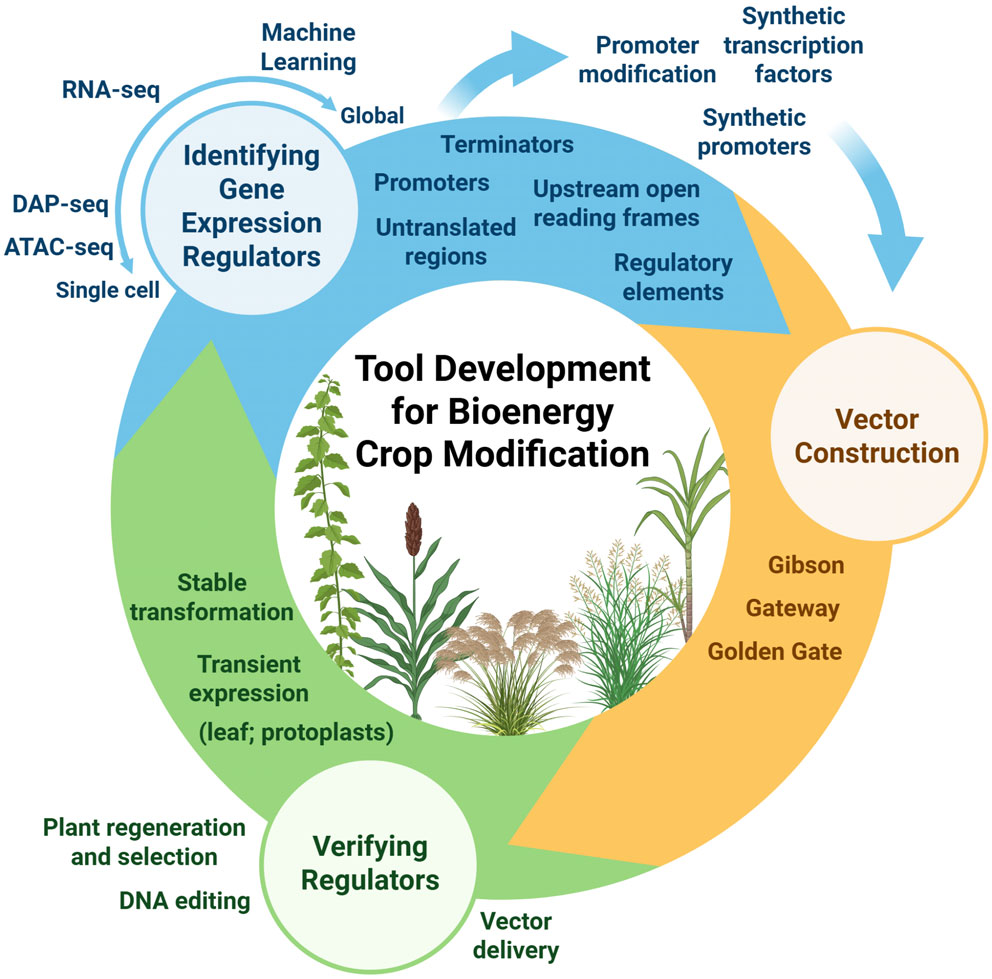
The Science
Through genetic engineering, scientists can create strains with entirely new features, such as plants that produce certain chemicals or that store more energy in sugars that are easier for microbes to turn into biofuels. Making these changes without affecting how the plant grows requires controlling when and where certain genes are turned on and off. Despite progress, there are still hurdles to designing and using these genetic tools to precision engineer crops grown for energy. For example, genetic engineering techniques that work in some plants don’t work in some bioenergy species, and greenhouse studies are not always good at predicting what will work in the field.
The Impact
Bioenergy crops like switchgrass, sorghum, and poplar can be renewable, home-grown sources of transportation fuels and chemicals used to make plastics, adhesives, medicines, and other products. These crops require little water or fertilizer and can be grown on land not suited for food crops, providing additional revenue for farmers and improving soil health while reducing pollution.
Summary
Scientists with the Great Lakes Bioenergy Research Center reviewed the landscape of plant transformation technologies as they apply to bioenergy plants to present a roadmap for improving these crops with precision engineering.
New technologies allow scientists to understand how plant genes work in greater detail than ever before. For example, it is now possible to identify promoters and regulators, which are like on/off switches and volume controls for other genes, within individual cells. Advanced tools allow scientists to screen entire DNA sets (genomes) for areas likely to include these regulatory elements and to run lab tests to find where proteins known as transcription factors attach to activate them.
The new data resources span an unprecedented range from plant–environment interaction to single cell behavior. Machine learning and other forms of artificial intelligence could reveal connections, leading to a better understanding of how these systems work together.
Remaining challenges and potential solutions include:
- Adapting open-source guides for plant modification to economically-relevant bioenergy crops, even those that are difficult to breed.
- Developing standardized methods for quickly testing genetic modifications that work across different species. This approach, known as transient expression, allows scientists to check whether something works in one part of a plant before going through the long and expensive process of permanently altering the plant’s DNA.
- Updating models to better predict how engineered crops will perform in the real world, including factors such as yield, quality, processability.
- Designing new genetic “building blocks” that mimic nature but work independently of the plant’s natural functions.
- Using robots and artificial intelligence to speed up the process of processing and analyzing vast amounts of data, in particular focusing on specific plant tissues and individual cells.